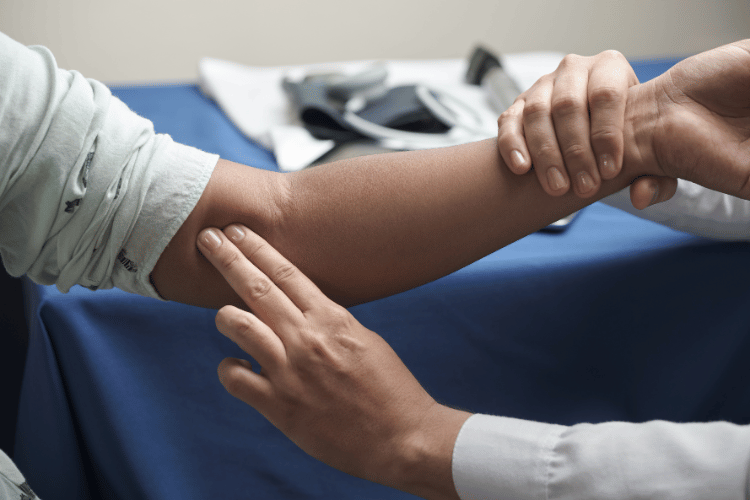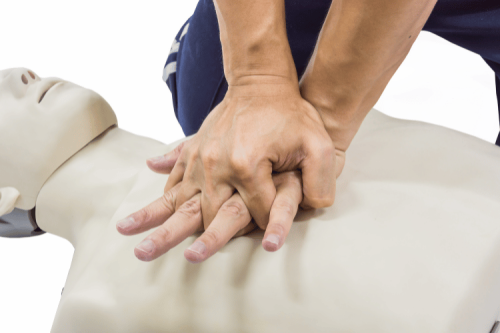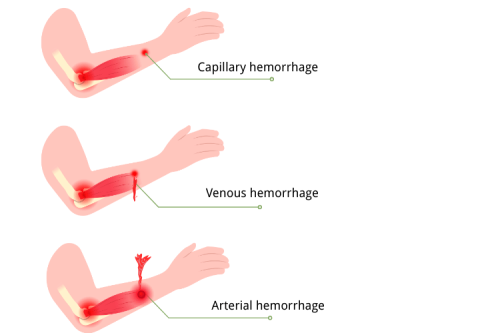
The brachial artery is a critical blood vessel that plays a vital role in circulation, blood pressure measurement, and emergency medical assessments. While many people are familiar with checking their pulse at the wrist (radial artery) or neck (carotid artery), the brachial pulse is vital in clinical settings, particularly for infants and during CPR.
For healthcare professionals, first responders, and individuals learning basic first aid, accurately locating and assessing the brachial pulse is a crucial skill. Whether measuring blood pressure, evaluating circulation, or responding to a medical emergency, understanding the anatomy and pulse characteristics of this artery can significantly impact patient care.
Let’s explore the brachial artery’s function, its precise location, techniques for palpating the pulse, and its clinical significance in medical practice.
Understanding the Brachial Pulse
The human circulatory system plays a vital role in maintaining overall health, and understanding specific components, such as the brachial pulse, contributes to a better understanding of how the body functions. This guide provides a closer examination of the brachial pulse, highlighting its definition, significance, and comparison with other common pulse points.
What is the Brachial Pulse?
The brachial pulse is a palpable heartbeat that originates from the brachial artery, a significant blood vessel located in the arm. This pulse can typically be felt on the inside of the upper arm, near the elbow crease. It is a critical site for assessing blood flow to the arm and is commonly used when measuring blood pressure manually with a cuff and stethoscope. To detect it, gentle pressure is applied at the inner aspect of the arm, above the crease, where the brachial artery lies close to the skin's surface.

What is the Brachial Pulse
Importance of the Brachial Artery
The brachial artery serves as the main blood supply route for the arm and is a central point in the vascular system. It not only nourishes the muscles and tissues of the arm but also acts as an essential indicator of vascular health. Clinically, the brachial artery's pulse is used to monitor blood pressure, check for blockages, and assess peripheral circulation. Its accessibility makes it an invaluable tool for medical professionals, especially in emergency situations or pediatric assessments when smaller arteries may be less detectable.
Differences Between Radial and Brachial Pulses
Although both the radial and brachial pulses are critical for various assessments, they differ in location and purpose. The radial pulse, found on the wrist below the thumb, is easier to access and is often used for general heart rate monitoring. The brachial pulse, located deeper in the arm, is more commonly utilized for precise measurements like blood pressure or evaluating vascular integrity. While the radial pulse is usually the go-to for quick checks, the brachial pulse provides more comprehensive data in clinical and diagnostic settings. These distinctions highlight their complementary roles in medical practice.
How to Check the Brachial Pulse
The brachial pulse is a vital indicator of blood flow and heart function, often used in medical settings and by caregivers to assess circulation. Located on the upper arm, this pulse point is particularly important for checking the heart rate in infants and young children, as well as in adults during certain medical procedures. Understanding how to locate and measure the brachial pulse accurately is essential for effective health monitoring. This guide will walk you through the steps to check the brachial pulse, highlight common mistakes to avoid, and explain when to seek professional medical advice.
Step-by-Step Guide to Take a Brachial Pulse
- Prepare the Individual: Ensure the person is seated or lying down in a relaxed position. The arm should be supported and slightly bent at the elbow.
- Locate the Brachial Artery: Place your fingers on the inside of the upper arm, between the biceps and triceps, just above the elbow crease. Use your index and middle fingers, avoiding the thumb as it has its own pulse.
- Apply Gentle Pressure: Press lightly until you feel a steady rhythmic beat. Avoid pressing too hard, as this can obstruct blood flow and make the pulse difficult to detect.
- Count the Beats: Using a watch or timer, count the number of beats for 30 seconds and multiply by two to calculate the beats per minute (BPM). For infants, count for a full minute for greater accuracy.
Common Mistakes When Checking the Brachial Pulse
- Using the Thumb: The thumb has its own pulse, which can lead to inaccurate readings.
- Excessive Pressure: Pressing too hard can block the artery, making it impossible to feel the pulse.
- Incorrect Placement: Failing to locate the correct spot on the arm can result in missing the pulse entirely.
- Rushing the Process: Not taking enough time to count accurately can lead to errors in BPM measurement.
When to Consult a Healthcare Provider
If the brachial pulse is irregular, extremely fast, or slow, it may indicate an underlying health issue. Additionally, difficulty in locating the pulse or any signs of poor circulation, such as cold or discolored skin, should prompt a consultation with a healthcare professional. Regular monitoring and professional evaluation are crucial for individuals with known cardiovascular conditions.
Health Implications of Brachial Pulse Readings
The brachial pulse, located on the upper arm, serves as a critical indicator of cardiovascular health and overall circulation. By assessing the rhythm, strength, and rate of the brachial pulse, healthcare providers can gather valuable insights into a person’s heart function and detect potential health issues. This overview explores what the brachial pulse can reveal about your health, conditions associated with abnormal readings, and how it compares to the radial pulse in health assessments.
What Your Brachial Pulse Can Indicate About Your Health
The brachial pulse provides essential information about blood flow and heart activity. A strong, regular pulse typically indicates healthy circulation, while an irregular or weak pulse may signal underlying issues such as arrhythmias, low blood pressure, or arterial blockages. In infants and young children, the brachial pulse is often used to assess heart rate due to its accessibility and reliability.
Conditions Related to Abnormal Brachial Pulse
- Arrhythmias: An irregular pulse may point to heart rhythm disorders, requiring further evaluation.
- Hypertension or Hypotension: Abnormally strong or weak pulses can reflect high or low blood pressure, respectively.
- Peripheral Artery Disease (PAD): A weak or absent brachial pulse may indicate narrowed or blocked arteries, reducing blood flow.
- Shock or Trauma: In emergency situations, a faint brachial pulse can signal poor circulation or critical blood loss.
Comparing Brachial and Radial Pulse for Health Assessments
While the brachial pulse is commonly used in medical settings, the radial pulse, located on the wrist, is often preferred for quick assessments. However, the brachial pulse is more reliable for measuring blood pressure and evaluating circulation in the upper body. Both pulse points provide complementary data, but the choice depends on the clinical context and the patient’s condition.
Frequently Asked Questions
How do I take your pulse at the brachial artery location?
To take your pulse at the brachial artery location, locate the inner side of your upper arm, about one inch above the elbow joint. Use your index and middle fingers to gently press into the area, feeling for the pulse. This is often referred to as the brachial pulse location.
What is the function of the brachial artery?
The brachial artery is the major blood vessel that supplies blood to the arm. It is a continuation of the axillary artery and branches off into the radial and ulnar arteries. Its primary function is to ensure adequate blood flow to the muscles and tissues of the upper arm and forearm.
How can I detect the pulse in adults using the brachial artery?
To detect the pulse in adults using the brachial artery, locate the pulse point in the antecubital fossa, which is located on the inner side of the arm near the elbow. Press gently with your fingers until you feel the pulse, ensuring that you do not occlude the artery while checking.
What is the pulse rate and how is it measured?
The pulse rate refers to the number of times your heart beats per minute and can be measured by counting the beats you feel at a pulse point. To measure your pulse, take your pulse at the brachial artery or another artery, count the number of beats you feel for 15 seconds, and multiply by four to get your pulse rate in beats per minute.
Where does the brachial artery run along the arm?
The brachial artery runs along the inside of the arm, starting from the continuation of the axillary artery and extending down toward the elbow. It travels in close proximity to the biceps tendon and can be palpated in the antecubital fossa.
Why is the brachial pulse preferred over the carotid pulse in some situations?
The brachial pulse is often preferred over the carotid pulse in certain situations, such as during CPR or in infants, because it is less likely to be affected by external pressure or movement, making it easier to assess accurately. Additionally, the brachial artery is a major blood vessel that can provide reliable readings.
How do I locate the pulse in the radial artery?
To locate the pulse in the radial artery, place your index and middle fingers on the wrist, just below the base of the thumb. The radial artery runs along the outer side of the wrist, and you should be able to feel the pulse by applying gentle pressure.
What does it mean if I cannot feel the brachial pulse?
If you cannot feel the brachial pulse, it may indicate poor blood flow, which could be a sign of a vascular issue or peripheral artery disease. It is important to seek medical advice if you consistently have difficulty detecting the pulse, as this can be a symptom of underlying health conditions.
How long should I check for a pulse?
When checking for a pulse, it is recommended to check for at least 15 seconds to ensure accuracy. Count the beats you feel and then multiply that number by four to determine your pulse rate per minute.
The Bottom Line
Mastering the brachial pulse assessment is crucial for healthcare providers, first responders, and even caregivers. From routine blood pressure checks to life-saving CPR, this pulse point offers vital insights into a patient’s circulatory and cardiac health.
Whether you’re training in medical care or simply want to improve your first aid skills, practicing the correct technique ensures accurate readings and better patient outcomes. With patience and proper positioning, locating the brachial pulse becomes an invaluable tool in both clinical and emergency settings.
For those in medical training, regular practice on different individuals—especially infants—enhances proficiency and confidence in this essential skill.








 Login with Google
Login with Google Login with Facebook
Login with Facebook